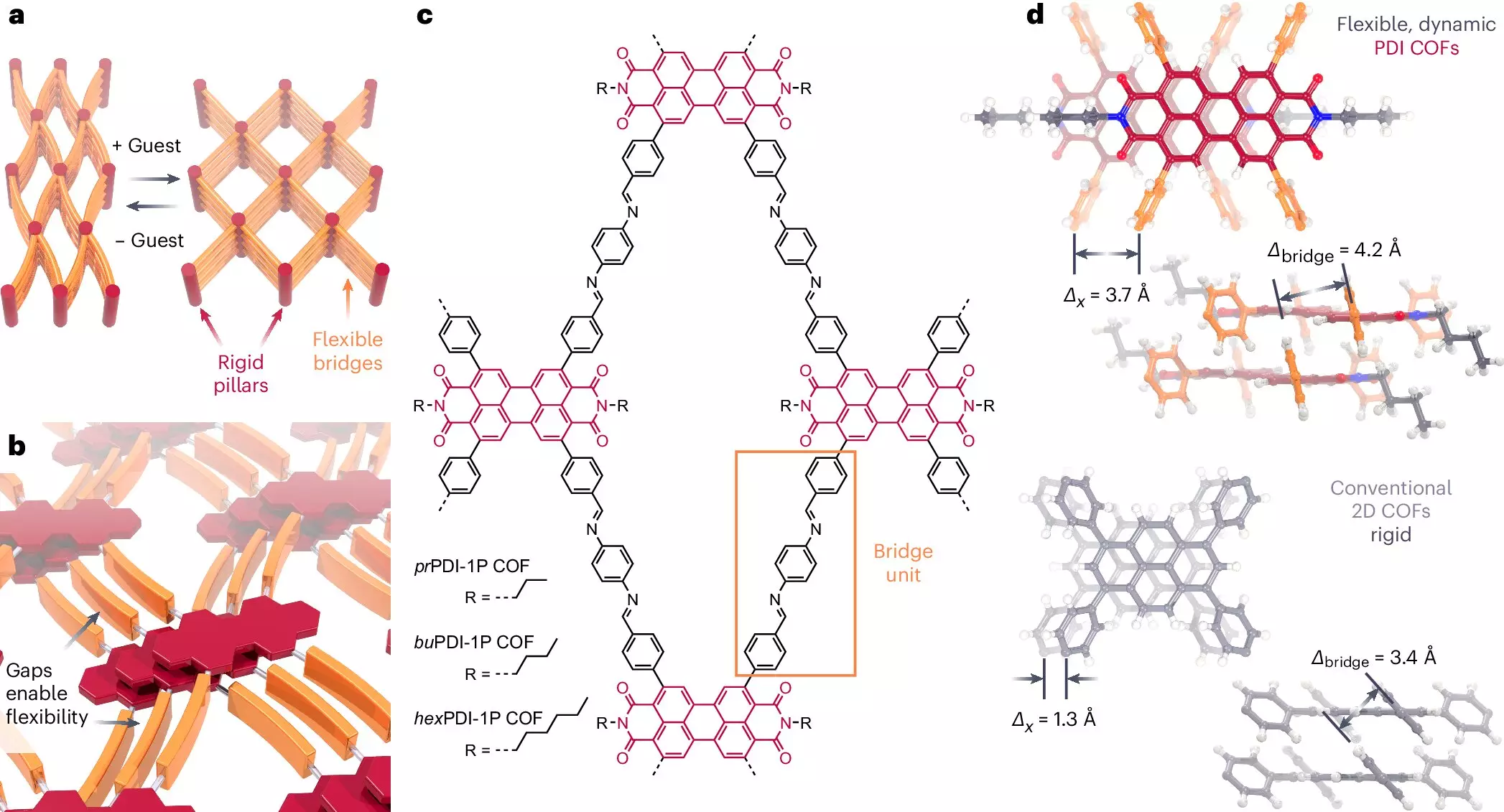In the realm of advanced materials science, a groundbreaking development has emerged from the collaborative efforts of an international research team at the Dresden University of Technology (TUD), spearheaded by Dr. Florian Auras. They have successfully engineered a next-generation material in the burgeoning area of covalent organic frameworks (COFs). Unlike typical static frameworks that researchers have focused on in the past, this newly synthesized two-dimensional polymer possesses the remarkable ability to exhibit reversible and controlled shifts in its properties, igniting hope for future applications in technologies demanding flexibility and precision, such as electronics and information technology.
A Paradigm Shift in Material Behavior
Historically, porous covalent organic frameworks were confined to rigid architectures designed for specific tasks, primarily centered around functionality and stability. However, the innovative approach adopted by Dr. Auras and his team introduces a level of dynamism previously unseen in COFs. By conceiving a design strategy to create frameworks that can morph from a compact state to a porous one—akin to a sponge absorbing and releasing solvents—the researchers have paved the way for a versatile material whose structures can be manipulated with unprecedented accuracy. This ingenious flexibility is set to modify our understanding of what organic frameworks can accomplish and opens doors to novel applications across various industries, including catalysis, sensor technology, and energy management.
Targeted Manipulation of Properties
The explicit goal of this research was not merely to construct another solid material, but rather to generate a flexible and responsive structural paradigm. According to Dr. Auras, the ability to alter the local geometry, such as size, shape, and inherent optical characteristics like color or fluorescence, adds a fascinating dimension to COFs. This targeted manipulation allows users to fine-tune material properties for specific applications, which is a game-changer. As technological demands evolve, the step towards creating stimuli-responsive materials marks a significant leap forward.
The Vision for Future Technologies
What truly captivates Dr. Auras and his team is not just the creation of new materials, but the implications these materials hold for advancing knowledge in quantum mechanics. The pursuit of switchable quantum states—where materials can transition between different functional states under controlled conditions—offers tantalizing prospects for innovation in computing and information storage technologies. As quantum computing continues to evolve, the interplay between material properties and quantum mechanics could unlock groundbreaking advancements, enhancing the capabilities of next-generation electronics.
An Invitation for Further Exploration
The ongoing work surrounding the development and application of covalent organic frameworks reflects a blend of scientific rigor and visionary thinking. It embodies a synthesis of curiosity and practical application that is essential in the quest for materials that can adapt to the needs of a rapidly advancing technological landscape. As researchers like Dr. Auras continue to delve deeper into the potential of COFs, the intersection of dynamic materials and quantum information promises an exciting frontier for exploration and discovery. The exploration is far from over, and the journey toward fully realizing the capabilities of these advanced materials stands to redefine our technological framework for years to come.


Leave a Reply